Abstract
The formation of acetone and n-butanol by Clostridium acetobutylicum NCIB 8052 (ATCC 824) was monitored in batch culture at 35°C in a glucose (2% [wt/vol]) minimal medium maintained throughout at either pH 5.0 or 7.0. At pH 5, good solvent production was obtained in the unsupplemented medium, although addition of acetate plus butyrate (10 mM each) caused solvent production to be initiated at a lower biomass concentration. At pH 7, although a purely acidogenic fermentation was maintained in the unsupplemented medium, low concentrations of acetone and n-butanol were produced when the glucose content of the medium was increased (to 4% [wt/vol]). Substantial solvent concentrations were, however, obtained at pH 7 in the 2% glucose medium supplemented with high concentrations of acetate plus butyrate (100 mM each, supplied as their potassium salts). Thus, C. acetobutylicum NCIB 8052, like C. beijerinckii VPI 13436, is able to produce solvents at neutral pH, although good yields are obtained only when adequately high concentrations of acetate and butyrate are supplied. Supplementation of the glucose minimal medium with propionate (20 mM) at pH 5 led to the production of some n-propanol as well as acetone and n-butanol; the final culture medium was virtually acid free. At pH 7, supplementation with propionate (150 mM) again led to the formation of n-propanol but also provoked production of some acetone and n-butanol, although in considerably smaller amounts than were obtained when the same basal medium had been fortified with acetate and butyrate at pH 7.
Full text
PDF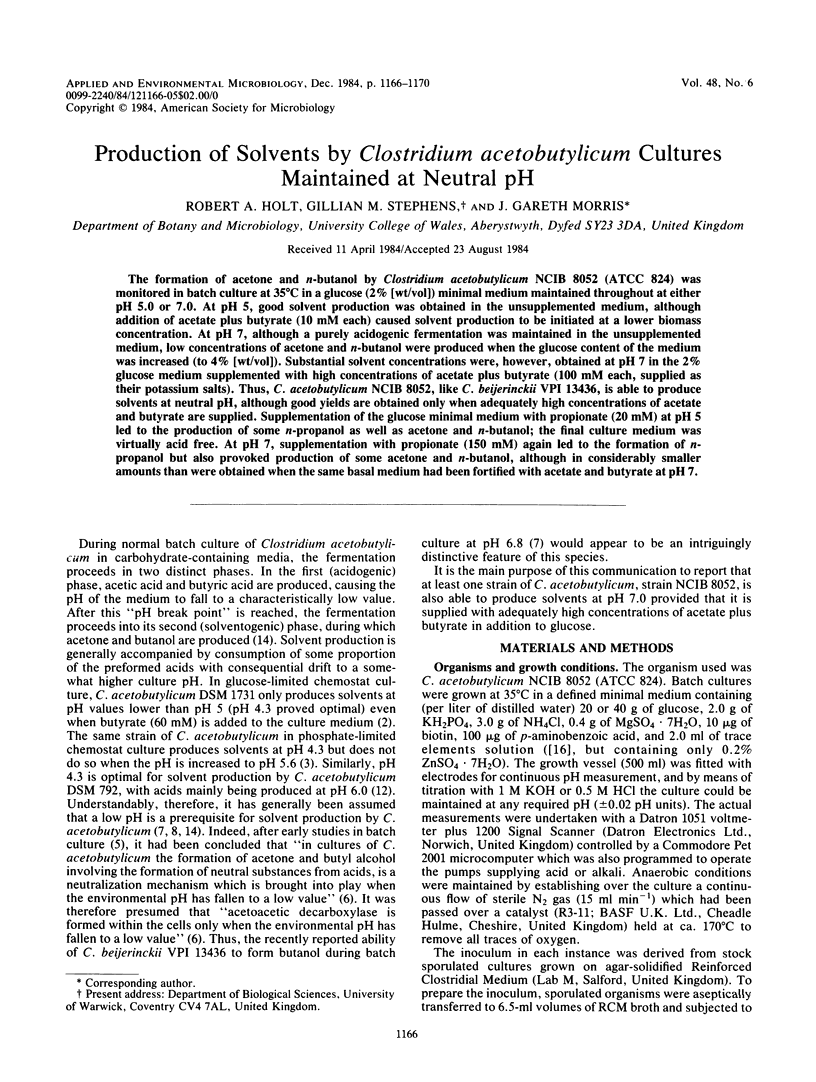
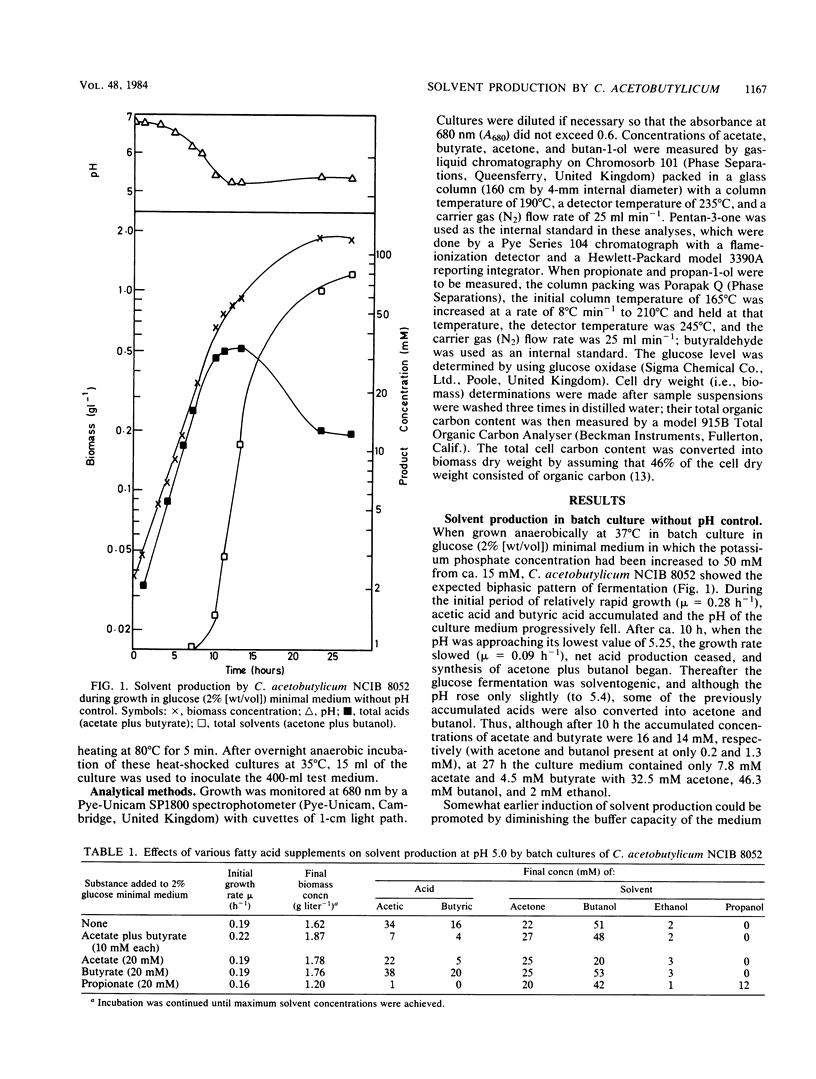
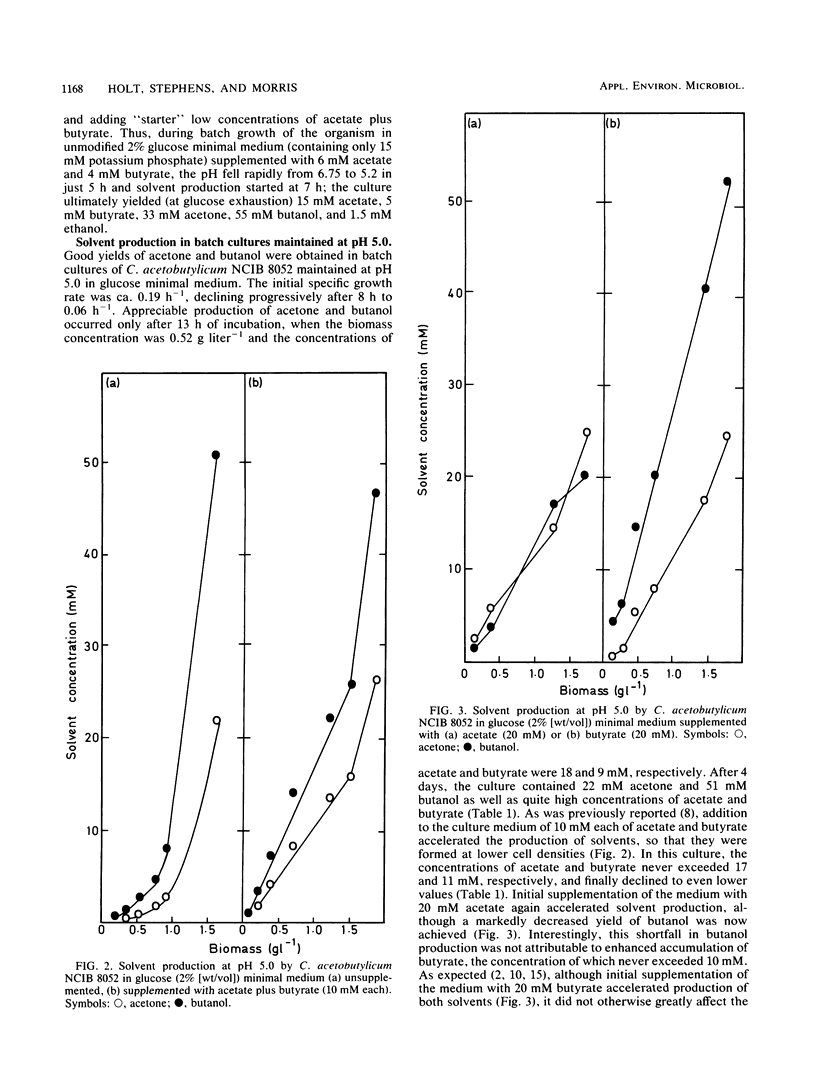
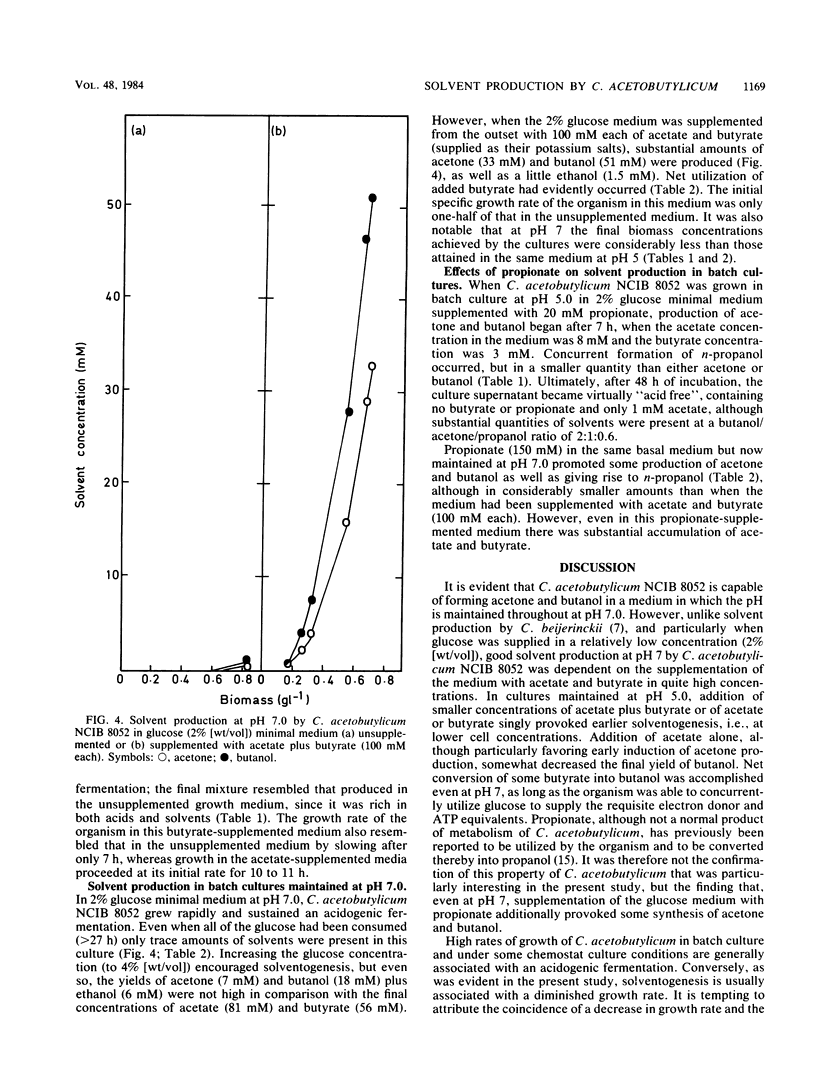
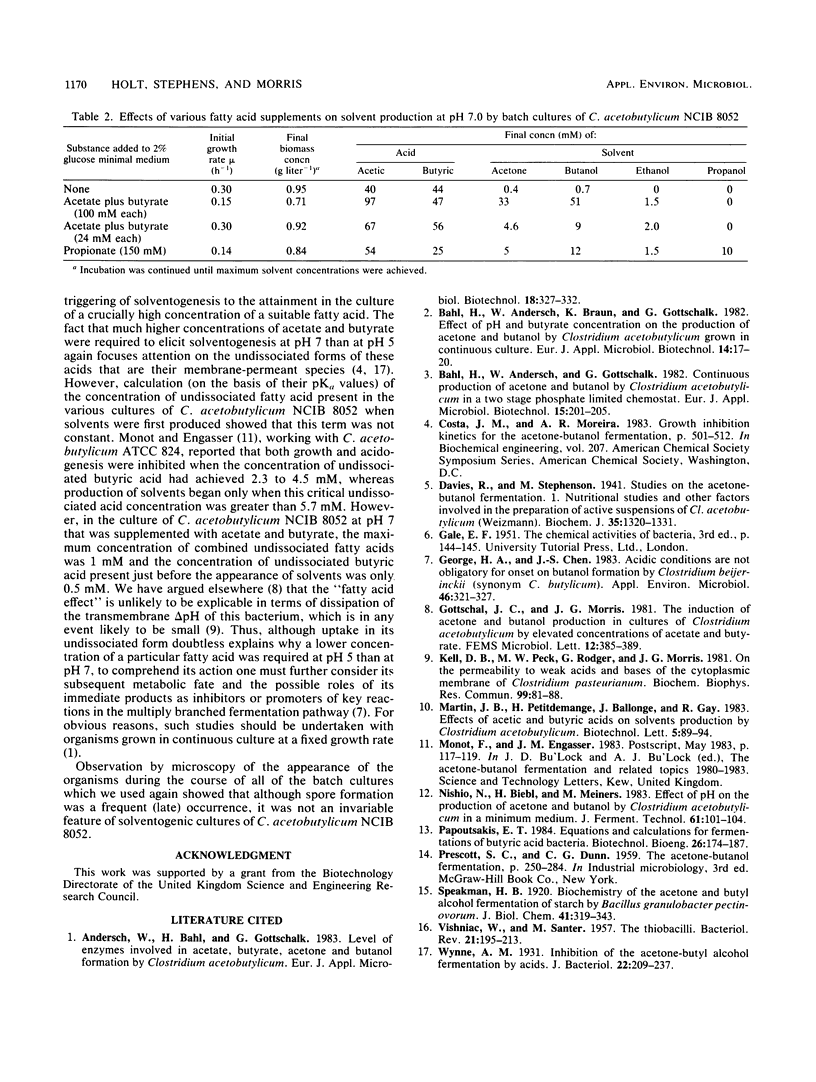
Selected References
These references are in PubMed. This may not be the complete list of references from this article.
- Davies R., Stephenson M. Studies on the acetone-butyl alcohol fermentation: Nutritional and other factors involved in the preparation of active suspensions of Cl. acetobutylicum (Weizmann). Biochem J. 1941 Dec;35(12):1320–1331. doi: 10.1042/bj0351320. [DOI] [PMC free article] [PubMed] [Google Scholar]
- George H. A., Chen J. S. Acidic Conditions Are Not Obligatory for Onset of Butanol Formation by Clostridium beijerinckii (Synonym, C. butylicum). Appl Environ Microbiol. 1983 Aug;46(2):321–327. doi: 10.1128/aem.46.2.321-327.1983. [DOI] [PMC free article] [PubMed] [Google Scholar]
- Kell D. B., Peck M. W., Rodger G., Morris J. G. On the permeability to weak acids and bases of the cytoplasmic membrane of Clostridium pasteurianum. Biochem Biophys Res Commun. 1981 Mar 16;99(1):81–88. doi: 10.1016/0006-291x(81)91715-0. [DOI] [PubMed] [Google Scholar]
- VISHNIAC W., SANTER M. The thiobacilli. Bacteriol Rev. 1957 Sep;21(3):195–213. doi: 10.1128/br.21.3.195-213.1957. [DOI] [PMC free article] [PubMed] [Google Scholar]
- Wynne A. M. Inhibition of the Acetone-Butyl Alcohol Fermentation by Acids. J Bacteriol. 1931 Sep;22(3):209–237. doi: 10.1128/jb.22.3.209-237.1931. [DOI] [PMC free article] [PubMed] [Google Scholar]


